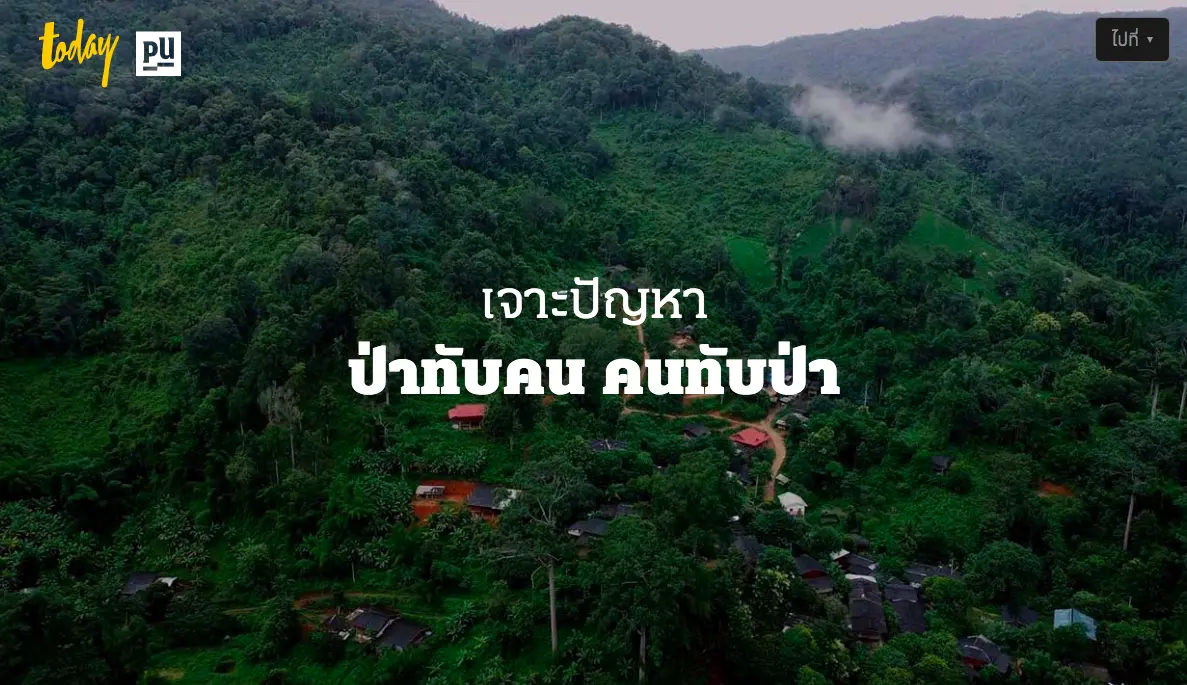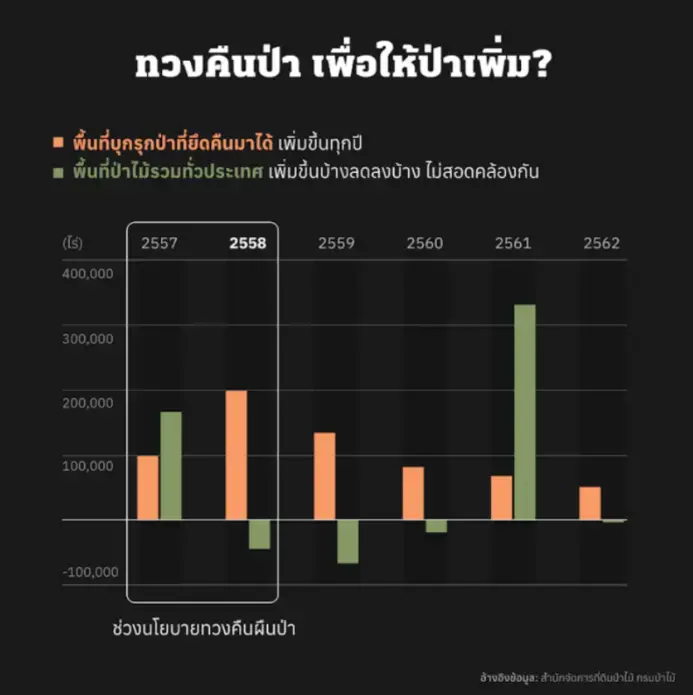This story excerpt was translated from Thai. To read the original story in full, visit Workpoint News. Our website is available in English, Spanish, bahasa Indonesia, French, and Portuguese.
The conflict between “humans” and “forests” in Thailand has existed for a long time and could possibly be traced back since the promulgation of the Forests Act, B.E. 2484 (1941). The law, for the first time in history, alienated between “the state’s forests” and “the other areas,” where villagers could dwell and work. The friction between these two areas eventually led to the “forests encroaching on people, and people encroaching on forests” phenomenon we are seeing today.

Furthermore, the goal for Thailand to have at least 40% of forest areas only heightened the tension between the authorities and the villagers. Yet, the attempts by the state to reclaim the forest, which several times came at the cost of eviction of the villagers, not only resulted in a failure to achieve such aim, but also drove a wedge between the government and the villagers who simply hoped to live and preserve their way of living in harmony with the forests.
Punch UP is inviting the audience to explore the data on Thailand forest area conflicts in an ‘Interactive Scrollytelling’ format that combines data visualization, video, and 360° pictures. Through the storytelling, the audience is encouraged to ask and find an answer on, for instance, the root cause and the origin of the issue, or whether the policy to reclaim the forest can actually enhance the overall forest size. Also, whether the answer in reality lies in the understanding that it is not an issue if the villagers can co-exist with the forests.
















